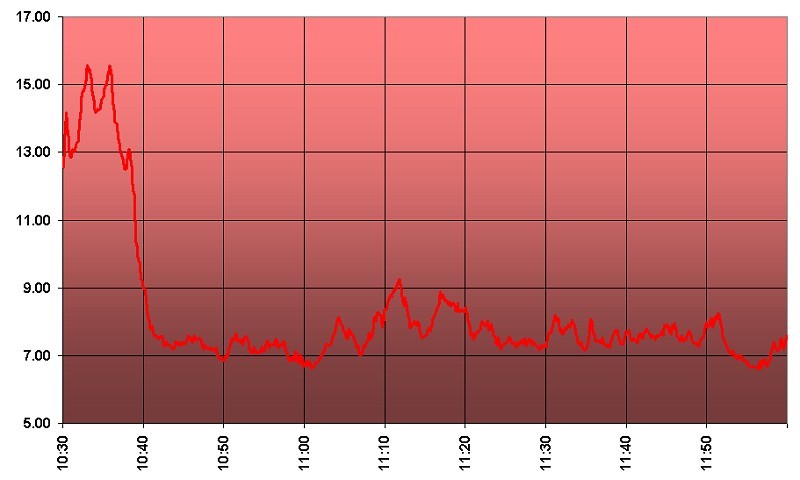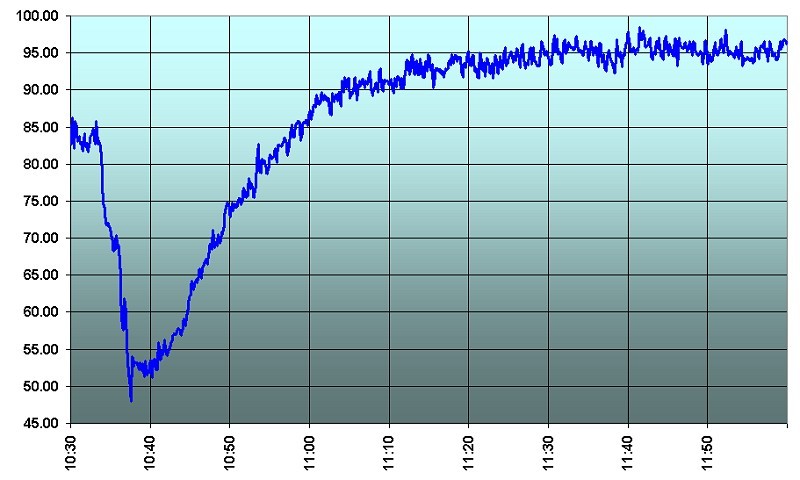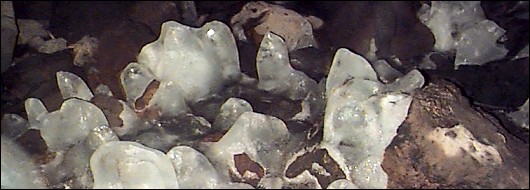Geology of Lavatubes
Lavatubes of the Mount St. Helens Region
Geological SettingLavatubesApe CaveCave Basalt MapCave ClimateVideo Clips
Ape Cave Climate Data
On Saturday, October 20, 2001, members of the Willamette Valley Grotto of the National Speleological Society began the first of a series of mapping expeditions to Ape Cave on Mt. St. Helens in Washington State. During this first session, we hiked up slope to the upper entrance, and worked our way down to the main entrance. During this time, I made use of a Vernier LabPro datalogger, and captured temperature and relative humidity during the first 90 minutes of the trip. The unit was attached to my 'photovest' with the two probes dangling off my back shoulder, to get away from my warm breath. However, in an attempt to shinny-up a narrow side passage, I inadvertently shut off the unit. At this point though, the conditions had become relatively stable. Below are line graphs created from the data:
Temperature (Degrees Celsius)

As one can see from the graph above, our journey into the cave, moving along in 'spurts' as we took mapping readings, is mirrored in the local conditions. Most notable for the temperature is that it makes a sudden drop from the ambient outside air temperature of around 15 degrees C, (about 60 degrees F) to around 7, (44 F).
Relative Humidity

Since humidity is dependant upon temperature, (the cooler the air, the less water it can hold as vapor), the relative humidity readings jumped up. But not at first. Interestingly, the cool air near the entrance to the cave seems to have less water vapor than either the outside or further down within the cave, where the air is super-saturated. This is no doubt related to air flow interacting with the variations near the entrance.


